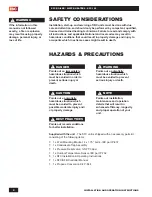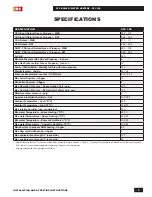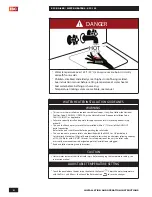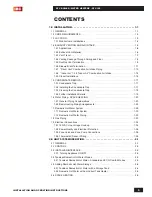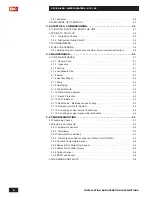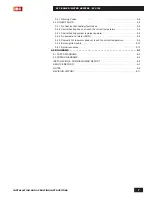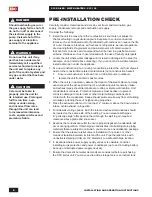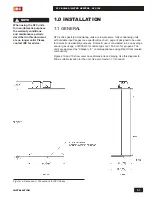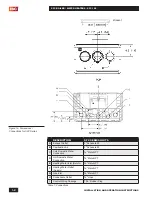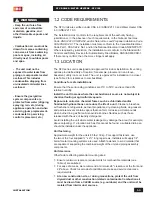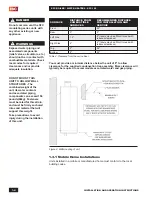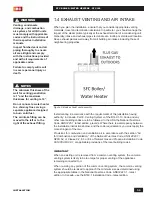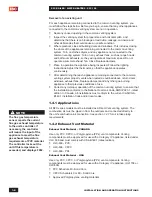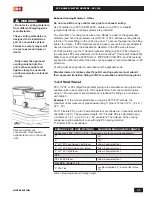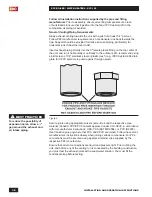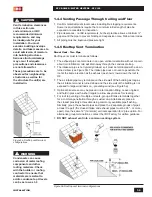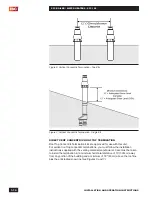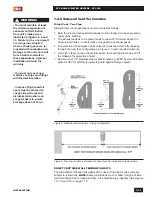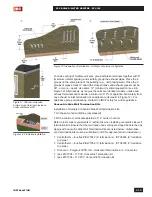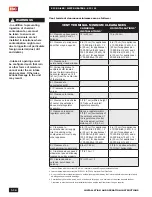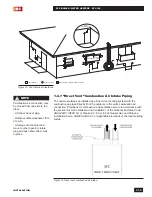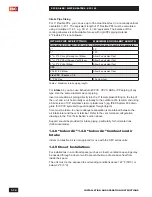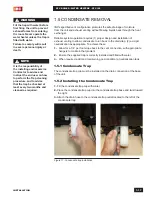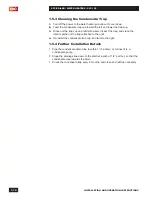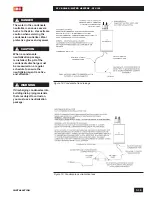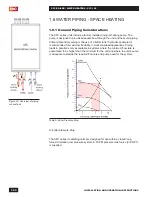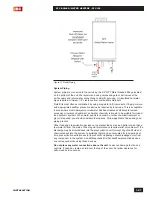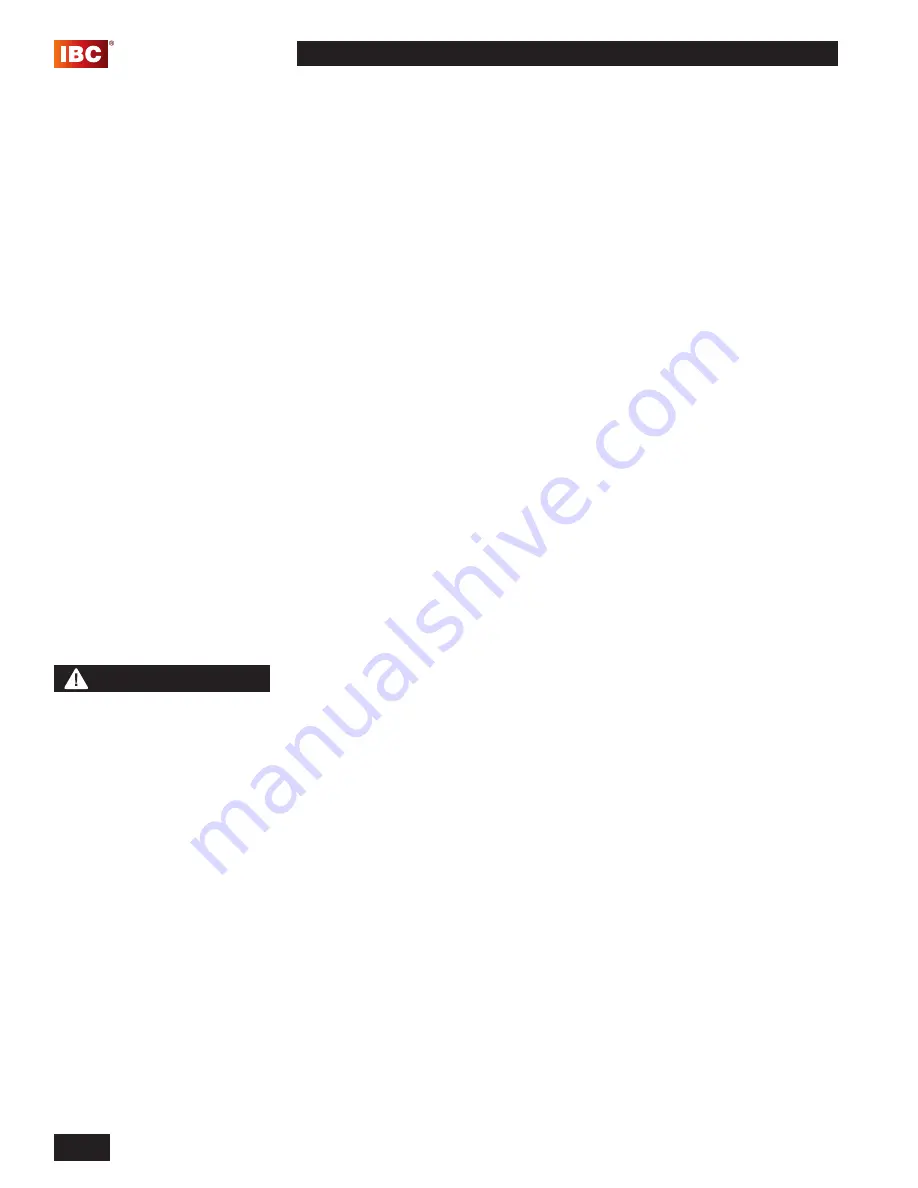
INSTALLATION AND OPERATION INSTRUCTIONS
1-6
SFC BOILER / WATER HEATERS - SFC 199
Removal of an existing unit
For each appliance remaining connected to the common venting system, you
must follow the steps below. Before you begin, ensure that any other appliances
connected to the common venting system are not in operation.
•
Seal any unused opening in the common venting system.
•
Inspect the venting system for proper size and horizontal pitch, and
determine that there is no blockage or restriction, leakage, corrosion and
other deficiencies that could cause an unsafe condition.
•
Where practical, close all building doors and windows. This includes closing
the doors of the appliances remaining connected to the common venting
system. Turn on clothes dryers and any appliance not connected to the
common venting system. Turn on any exhaust fans, such as range hoods
and bathroom exhausts, so they will operate at maximum speed. Do not
operate a summer exhaust fan. Close fireplace dampers.
•
Place in operation the appliance being inspected. Follow the lighting
instructions. Adjust the thermostat, so that the appliance operates
continuously.
•
After determining that each appliance remaining connected to the common
venting system properly vents when tested as outlined above, return doors,
windows, exhaust fans, fireplace dampers and any other gas-burning
appliance to their previous conditions of use.
•
Correct any improper operation of the common venting system to ensure that
the installation conforms to the National Fuel Gas Code, ANSI Z223.1 - latest
edition. In Canada, all installations must conform to the current CAN/CGA -
B149.1 Installation Code and/or local codes.
1.4.1 Applications
All SFC series models must be installed as a Direct Vent venting system. The
combustion air must be piped in from the outdoors and connected directly to
the unit’s combustion air connection.
See section 1.4.7 for air intake piping
requirements.
1.4.2 Exhaust Vent Material
Exhaust Vent Material – CANADA
Use only PVC, CPVC, or Polypropylene (PPs) vent components. Venting
components must be approved for use with a Category IV appliance, listed under
ULC 636 and must comply with CSA B149.1 (latest edition).
•
ULC-636 - PVC
•
ULC-636 - CPVC
•
ULC-636 - PPs
Exhaust Vent Material – USA
Use only PVC, CPVC, or Polypropylene (PPs) vent components. Venting
components must be approved for use with a Category IV appliance, (UL1738 or
ULC636).
•
PVC Schedule 40 –Solid Core
•
CPVC Schedule 40 or 80 – Solid Core
•
Approved Polypropylene venting materials
NOTE
The flue gas temperature
sensor reports the current
flue gas exhaust temperature
to the unit’s controller. If
necessary, the controller
will reduce the input of the
appliance to meet the flue
gas exhaust temperature
requirements of PVC material.
The controller locks out the
unit if this temperature is
exceeded, and displays F002.


